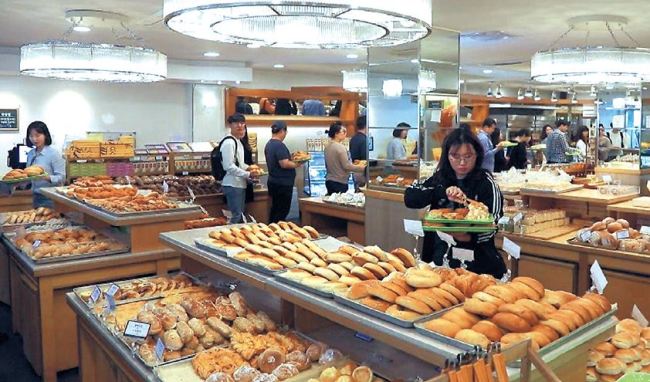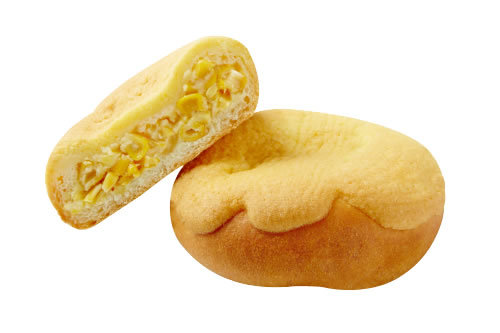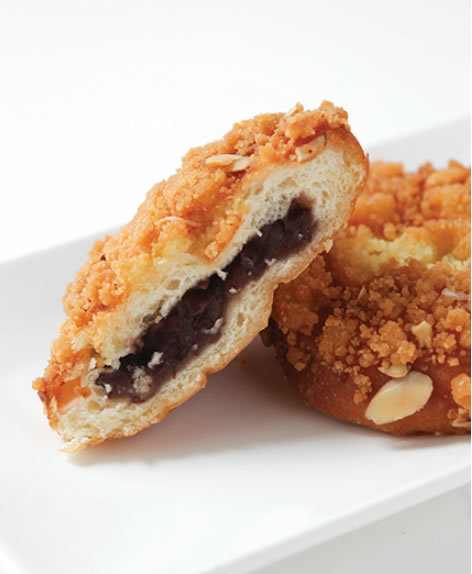[Weekender] Walking down bread’s memory lane
Heavily influenced by Japan in the 1940s and 1950s, provinces’ oldest bakeries show history of Koreans’ love for bread
By Song Su-hyunPublished : Jan. 12, 2018 - 14:50
Bread was first introduced to Koreans in the 19th century, when Catholic missionaries from Europe brought bread with them. But it was during Japan’s 35-year colonization that bread started to find its way onto the tables of ordinary citizens in Korea, eaten as a refreshment between meals.
It is for this reason that Koreans call bread “ppang,” a word originating from the Japanese pronunciation of “Pao-de-lo,” which means bread in Portuguese.
After gaining more popularity in the 1990s, as Korea opened up more to the world, bread has now become a popular alternative to rice, a Korean staple.
With an over 100-year history in Korea, there are types of bread that have remained popular for decades, with the taste recalling childhood memories for older generations.
For many Koreans in their 50s or older, danpatppang, or red bean paste buns, are nostalgic reminders of one of the first types of bread here.
It is for this reason that Koreans call bread “ppang,” a word originating from the Japanese pronunciation of “Pao-de-lo,” which means bread in Portuguese.
After gaining more popularity in the 1990s, as Korea opened up more to the world, bread has now become a popular alternative to rice, a Korean staple.
With an over 100-year history in Korea, there are types of bread that have remained popular for decades, with the taste recalling childhood memories for older generations.
For many Koreans in their 50s or older, danpatppang, or red bean paste buns, are nostalgic reminders of one of the first types of bread here.

The story of the red bean paste bun dates back to 1945 when Korean bakery Lee Sung Dang opened in Gunsan, North Jeolla Province, in the same year Korea was liberated from Japan.
The bakery was formerly Izmoya Bakery run by a Japanese owner during the colonial period since 1910. Lee Sung Dang’s first bread machines were left behind by the former owner.
Lee Sung Dang’s signature red bean paste bun is said to have been influenced by sweet Japanese bread filled with red paste, called “anpan.”
The red bean bun has a thin layer of bread covering red bean paste, which makes each bite sweet and chewy.
“Danpatppang was one of the most popular sources of sweetness that helped people feel full at a time when Korea was a poor country,” said an official at Lee Sung Dang. “The bread was quite an expensive snack for Koreans back then. That’s why people wanted it to be extra sweet.”
Including the red bean paste bun, most Korean bread features strong, sweet flavors, the official said, suggesting that this may be because such bread satisfies people over a longer period of time.
Another popular item from Lee Sung Dang is a bun filled with sliced vegetables, including cabbage, onions and carrots, seasoned with pepper and salt and covered with mayonnaise.
The veggie bun is also called “saladappang” in Korean, based on the Japanese pronunciation of salad.

In Daegu, Samsong Bakery is the oldest bakery, founded in 1957.
The bakery’s flagship corn bread is made with a filling that has whole kernels of fresh sweet corn, sweet and tangy cream cheese, and diced vegetables.
The sweetness of the corn bread is known to be so addictive that patrons often call it “mayak” bread, meaning drug in Korean.

In Daejeon, Sungsimdang is the biggest bakery. It opened in 1956 as a small steamed bun store.
The bakery is now famous for buchuppang, bread filled with seasoned leeks, and fried soboro, bread with streusel-like upper crust.
Soboro bread usually has no filling, but Singsindang’s version is filled with red bean paste.
By Song Su-hyun (song@heraldcorp.com)







![[Graphic News] More Koreans say they plan long-distance trips this year](http://res.heraldm.com/phpwas/restmb_idxmake.php?idx=644&simg=/content/image/2024/04/17/20240417050828_0.gif&u=)
![[KH Explains] Hyundai's full hybrid edge to pay off amid slow transition to pure EVs](http://res.heraldm.com/phpwas/restmb_idxmake.php?idx=644&simg=/content/image/2024/04/18/20240418050645_0.jpg&u=20240419100350)





![[From the Scene] Monks, Buddhists hail return of remains of Buddhas](http://res.heraldm.com/phpwas/restmb_idxmake.php?idx=652&simg=/content/image/2024/04/19/20240419050617_0.jpg&u=20240419175937)

![[KH Explains] Hyundai's full hybrid edge to pay off amid slow transition to pure EVs](http://res.heraldm.com/phpwas/restmb_idxmake.php?idx=652&simg=/content/image/2024/04/18/20240418050645_0.jpg&u=20240419100350)

![[Today’s K-pop] Illit drops debut single remix](http://res.heraldm.com/phpwas/restmb_idxmake.php?idx=642&simg=/content/image/2024/04/19/20240419050612_0.jpg&u=)